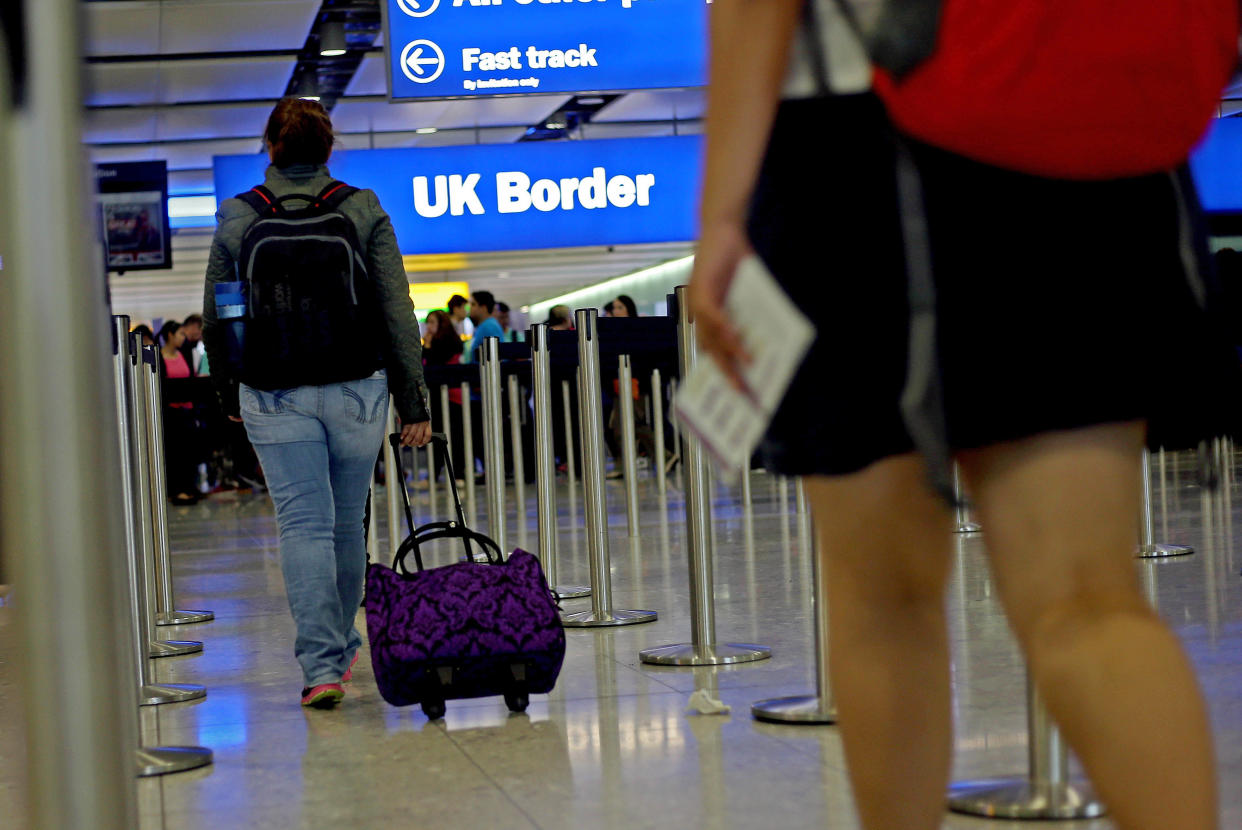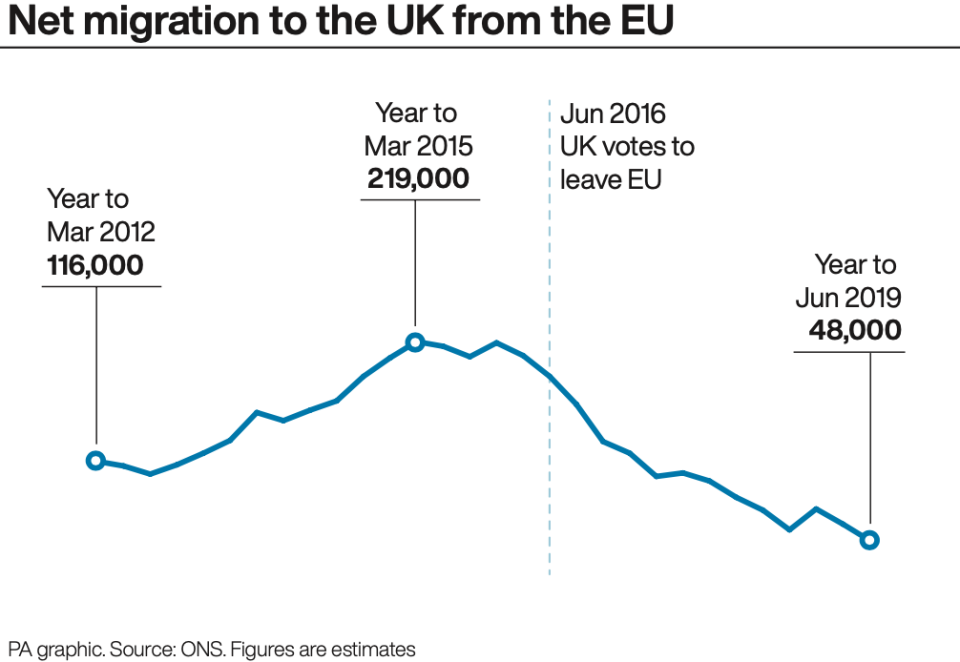Net migration to the UK falls to lowest level in six years as EU migrant numbers decline

An estimated 212,000 more people moved to the UK long-term in the last year than left, new figures show.
The number is the lowest level of net migration since 2013, according to the Office for National Statistics (ONS).
The figures for the year ending in June look at people coming to the country with the intention to stay for 12 months or more.
After peak levels of more than 200,000 in 2015 and early 2016, annual EU net migration has dropped and now stands at 48,000.
This is largely because of a fall in EU immigration, which remains at its lowest level since the year ending March 2013, according to the release.
Since 2016, there has been a decline in immigration for work while people coming to the UK to study has gradually increased, the report added.

Sophie Wingfield, head of policy and public affairs at the Recruitment and Employment Confederation, said the figures showed "worrying trends in migration for work continuing”.
She said: ”Our data has consistently shown a serious shortage of UK workers in many sectors, ranging from healthcare and engineering to hospitality and agriculture, and this has been getting worse since 2013.
"Meanwhile, the UK is becoming a less attractive destination for workers from overseas.
Read more from Yahoo News UK:
Nottinghamshire Police apologise for ‘victim-blaming’ Facebook post
Dutch entrepreneur jailed over £133m cocaine smuggling plot
Woman took her own life hours after fiance was killed in road accident
"Employers and recruiters need to be able to attract migrant workers to fill these vital roles.
"It is essential that we build a post-Brexit immigration system which is evidence-based and works for business, workers and the economy.”
The figures are classed as experimental estimates after the ONS admitted earlier this year it had been underestimating some EU net migration data since 2016.

An ONS spokesman said: "Our best assessment using all data sources is that long-term immigration, emigration and net migration have remained broadly stable since the end of 2016. However, we have seen different patterns for EU and non-EU citizens.
"While there are still more EU citizens moving to the UK than leaving, EU net migration has fallen since 2016, driven by fewer EU arrivals for work.
"In contrast, non-EU net migration has gradually increased for the past six years, largely as more non-EU citizens came to study.”
Separate immigration figures published by the Home Office showed there had been 189,459 work-related visas granted in the year to September - an 11% rise on the previous year and the highest since 2008 when changes were made to the immigration system.


